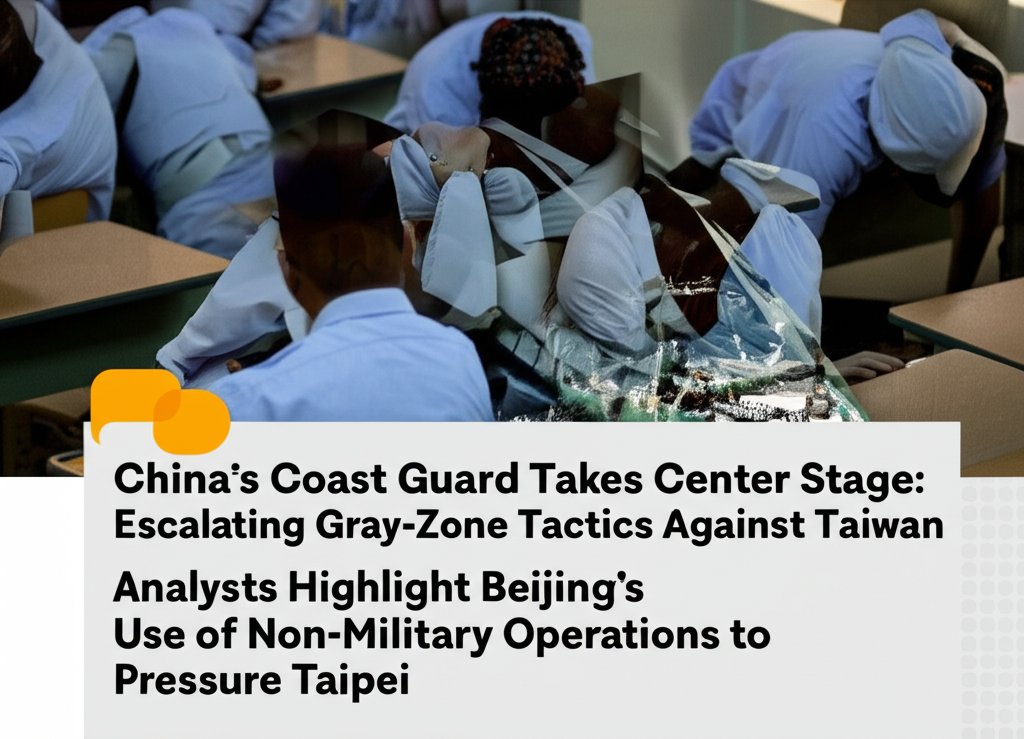China's Coast Guard Takes Center Stage: Escalating Gray-Zone Tactics Against Taiwan
Analysts Highlight Beijing's Expanding Use of Non-Military Operations to Pressure Taipei

Taipei, April 3 – The latest round of military exercises by the People's Liberation Army (PLA) surrounding Taiwan has seen a significantly increased role for China's coast guard, signaling a potential escalation of Beijing's "gray-zone" tactics, according to scholars.
In response to growing Chinese gray-zone activities – actions that fall short of open conflict but are provocative or aggressive – experts urge Taiwan to bolster its capabilities in countering these evolving, non-traditional security threats.
The PLA's Eastern Theater Command announced the beginning of joint exercises around Taiwan, positioning them as "a stern warning" to "Taiwan independence" separatist forces. The command, responsible for the East China Sea and Taiwan Strait, subsequently conducted a "Strait Thunder-2025A" drill before concluding the two-day joint combat exercises.
Chen Wen-chia (陳文甲), senior consultant at the Taipei-based think tank Institute for National Policy Research, noted that the PLA deployed its army, navy, air force, and rocket force to test their collaborative combat capabilities targeting Taiwan. These exercises included precision shootings targeting key infrastructure and a blockade of Taiwanese ports.
Chen (陳文甲) emphasized that these activities demonstrate increasingly sophisticated combat preparations by Chinese forces against Taiwan. He also pointed out the expanded role of China's coast guard, which practiced conducting law enforcement inspections in the Taiwan Strait.
Su Tzu-yun (蘇紫雲), a division director at the Taiwan military-funded think tank Institute for National Defense and Security Research, highlighted that, compared to the 2024 "Joint Sword" exercises, the coast guard simulated inspecting, repelling, and intercepting civilian ships in the Taiwan Strait. This suggests China may be considering nonmilitary operations to disrupt Taiwan's maritime supply lines, potentially to force a surrender in a cross-strait conflict.
Chieh Chung (揭仲), a research fellow at the Association of Strategic Foresight, also observed the increased presence of Chinese coast guard vessels, interpreting it as part of Beijing's "legal warfare" to assert jurisdiction over the Taiwan Strait.
Chen (陳文甲) urged the Taiwan government to enhance its self-defense capabilities and its ability to counter gray-zone warfare, particularly in light of the increased coast guard involvement. Su (蘇紫雲) noted that Taiwan's Navy currently employs main combat warships to counter the Chinese harassment.
Su (蘇紫雲) suggested that Taiwan's military could benefit from building ships similar to the Royal Navy's River-class patrol vessels, to monitor Chinese vessels, preserving the combat warships for wartime.
The Taiwan's Coast Guard Administration (CGA) reported detecting nine Chinese coast guard vessels operating near the nation's contiguous zone during the two-day PLA exercises, with 12 patrol vessels deployed to monitor them. Despite the presence of Chinese vessels, all freighters and cargo vessels near Taiwan continued to operate normally.
